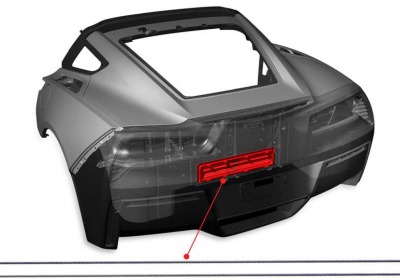Electric wire eases closing of Corvette Stingray hatch
Tue, 12 Feb 2013
A single piece of wire makes closing the hatch on the 2014 Chevrolet Corvette Stingray easier.
Tucked behind the rear fascia, the alloy wire changes shape when an electric current heats it up. The wire returns to its previous shape when it cools.
In the Corvette Stingray, engineers use the wire and its memory properties to open an air vent that lets air pressure escape when the hatch is closed. That reduces the force needed to close the hatch. When the wire cools, the change in shape allows the vent to close.
The change in wire shape can take just milliseconds once the electric current is applied. The Corvette engineers set up the system to take about four seconds from when the hatch is opened for the wire to open the vent. Slowing down the wire's shape change eliminated a click noise made by the vent cover hitting its stop -- fitting with the luxury and precision theme of the new Corvette.
The alternative to the wire system was an electric motor that would add weight and cost to the car.
The current Chevrolet Corvette has a vent system for its hatchback but that system is passive -- pressurized air being pushed out of the cargo area opens the vent.
The Corvette Stingray is the first General Motors car to use the electric wire vent system.
The convertible version of the Corvette Stingray is set to be unveiled on March 5 during the press preview of the Geneva motor show.
Here's a video from General Motors that demonstrates the memory wire and the vent for the Corvette Stingray:
By Dale Jewett

